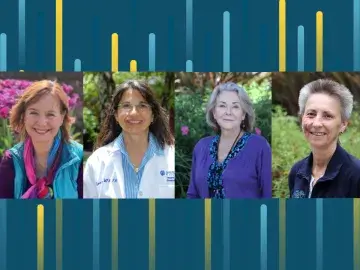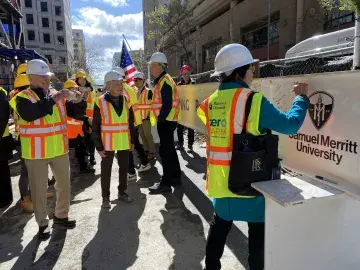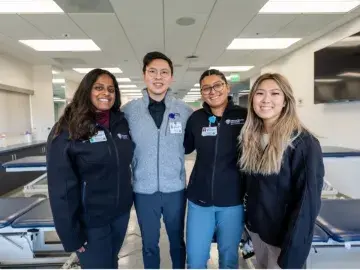When Gentrification Doesn't Stop at the University Doors

Student Voices is a blog series written by SMU students. If you have an idea for a story, reach out to Sasha Solomonov at ssolo@samuelmerritt.edu. This article is written by PA student Maisa Morrar.
“Where are we going to go now? There’s nothing left for us in East Palo Alto anymore.”
I hear this many times each day from longtime customers of my family’s business. Now we too are being pushed out.
My parents have owned La Familia, a general store catering to the needs of the community, for over 25 years in what was once the crime capital of the nation. East Palo Alto has since become Silicon Valley’s redevelopment project -- an oasis of land to take over, with people to displace and investment capital to spend.
La Familia does more than sell products; we offer social support to those who need it most. Every time I am there, customers bump into each other and embrace in familiar gestures of love and comfort. For many, LaFa (nickname from our customers) is a gathering place. A place where generations of people, from different cultures and backgrounds, come together and find comfort in knowing that we have everything they need. They are reassured that the familiar faces, such as my parents, are still here in an ever-changing town.
Many of LaFa’s customers are from the nearby shelters, and some of them live with mental health disabilities. Often lost and wandering, they come into our store to browse and connect with other people. Usually, the person that they tend to seek refuge in is my mother, who helps in all the ways she knows and understands how, like taking off a couple of dollars on a transaction, allowing for IOUs, or just listening to people. My siblings and I learned how to care for people by watching her.
This isn’t the first time La Familia’s fate has been decided by a technology company. La Familia’s first location was on the corner of Donahoe Street and University Avenue, just 1.6 miles away from its current location. After years of serving the community, my parents were given notice that the entire lot — which included low-income housing for tenants above our building as well as a grocery store, several Mexican-owned businesses like taquerias, a hair salon and a Quinceañera shop — was to be transformed into what is now a building for Amazon.
Now, we are being taken over by the Ravenswood Family Health Center next to us. A place that my family believes is funded by Facebook and other tech companies that are undisclosed. As we look around us, we find that prices of storefronts for rent are unaffordable and unrealistic. Areas, where rent was around 50 cents per square foot, have now jumped to $7.75.
Now, 11 years later, the effects of gentrification have once again hit my parent’s source of income, and I feel worried for my family’s future.
As I leave my parent’s store, now filled with signs announcing, “blow out sales,” I drive through various cities in the Bay Area on my way to school at Samuel Merritt University (SMU) in Oakland, and I wonder, “How many mom-and-pop shops that were once thriving and serving low-and-middle-income communities are now wine bars or overpriced restaurants?”
I decided to become a physician assistant so that I could serve the community where I was raised. I learned about service by watching my parents help people in their store, and I wanted to do the same through medicine.
In our classes, my classmates and I learn from amazing faculty and lecturers. We learn how to diagnose and treat people. We learn to take care of those that are ill and to treat diseases.
But as we gain this important medical knowledge, just outside our walls there are hundreds of people suffering from displacement and homelessness. More than 60 percent of Oakland’s homeless people lived in homes in Alameda County for more than 10 years before they landed on the streets. With the Bay Area’s soaring housing costs, more and more people have been forced out of their homes and small businesses.
In addition to stress, anxiety, and depression, a loss of housing or income often causes unintended consequences such as lack of access to preventative healthcare, exposure to environmental pollutants, and interactions with police that may aggravate mental health issues. And, like most inequities in America, the issue of gentrification is distressingly racialized — though African Americans make up 28 percent of Oakland’s population, nearly 70 percent of homeless people are black.
Often, clinicians participate in a health system that flushes people in and out of various health facilities without addressing the larger structures that keep them ill. As a future clinician, I want to know what our role is in helping to break those cycles. I’d like for my classmates and I to become structurally competent and equipped to ease more than just physical pain.
In addition to the medicine we are learning, we need to learn to look at how systems of oppression and, especially now, gentrification are impacting our patients, and beyond that, ourselves. As a future woman clinician of color, I know that I’ll be diversifying a medical field that is largely white. It’s important to me to work with communities that I share a sense of identity with, but this responsibility also comes with an understanding that we, the clinicians, also suffer from some of the same pains as the people we are serving. And in this regard, we must ask ourselves, how do we become more aware of what the people around us are facing?
My recommendation is to never stop learning. I recommend Robert Sapolsky’s “Sick of Poverty” to help understand how poverty affects a person’s health physically, socially and mentally.
Next, I suggest taking part in structural competency trainings that are happening in your workplaces and schools to help make the culture of medicine more just and effective.
If you would like to be more involved with other health professionals in developing a deeper political and social understanding of the challenges faced by our communities, the following local organizations are a great start:
Also, the following clinics are models in harm reduction practices:
This is by no means an exhaustive list of local Bay Area resources but a great way to get started. What is important to take away is that there is something that can be done, and we are on the front lines of patient advocacy and well-being. It is up to us to help shift the paradigm that keeps people oppressed and in poverty. If we do not, we are further allowing structural and institutional violence.


